Five-pointed 3D Star
 Activity Activity
In this lesson, students will create fun five-pointed 3D stars. Students will work in groups. Each group needs scissors and lots of Scotch tape. Starting from scratch, they will need a protractor and a ruler. 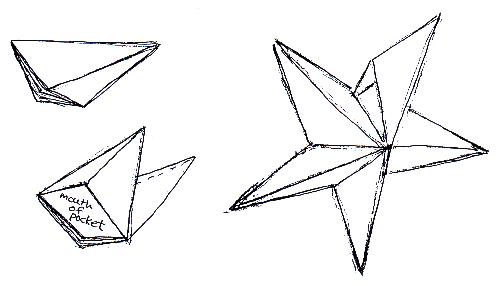 1. In order to create the star, you need to make 5 identical
non-convex hexagons from stiff paper (card stock or poster board).
The number of degrees for each angle is given in Figure 1. Other layouts are
possible! It is interesting to experiment with them.
1. In order to create the star, you need to make 5 identical
non-convex hexagons from stiff paper (card stock or poster board).
The number of degrees for each angle is given in Figure 1. Other layouts are
possible! It is interesting to experiment with them.
2. Score along the dotted lines as shown in Figure 1. Each hexagon makes a "pocket" (one point of the star) when you tape together the two longest sides. 3. Do this four more times, creating a total of five pockets. 4. Next, tape one side of the mouth of a pocket to one side of the mouth of another pocket. Do this four times and you will have five pockets that fold flat. Open them like a fan, and be sure that each pocket fills with air. Now you have a five-pointed 3D star! 5. The two sets of images below show the construction of two similar 3D stars. The smaller red star has its linear dimension ½ of the bigger yellow star. What do you think the relative volumes of the two stars will be? 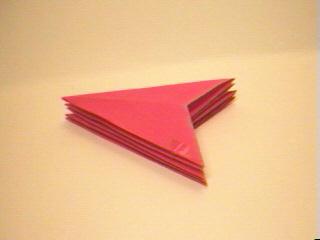
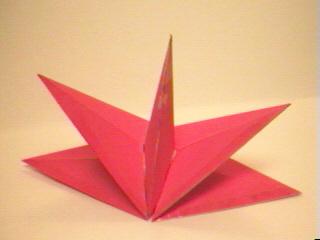


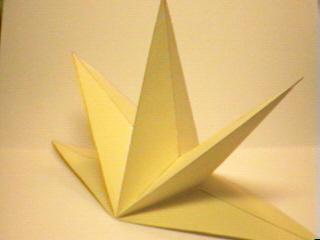
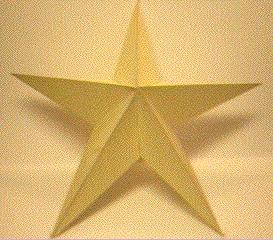
6. Whatever the shape of an object is, if you stretch (or shorten) it in one direction by a factor f, the new volume equals f3 times the old volume. If one shape S is similar to another shape T, then you can obtain S from T by stretching it or shortening it by the same factor f in three perpendicular dimensions. So the volume of S is 7. In the case of the five-pointed 3D stars above, a similar star whose linear dimensions are one-half of the original, has a volume (1/2)3 = 1/8 of the original. The red star will hold 1/8 as much as the yellow one! Lesson Index |